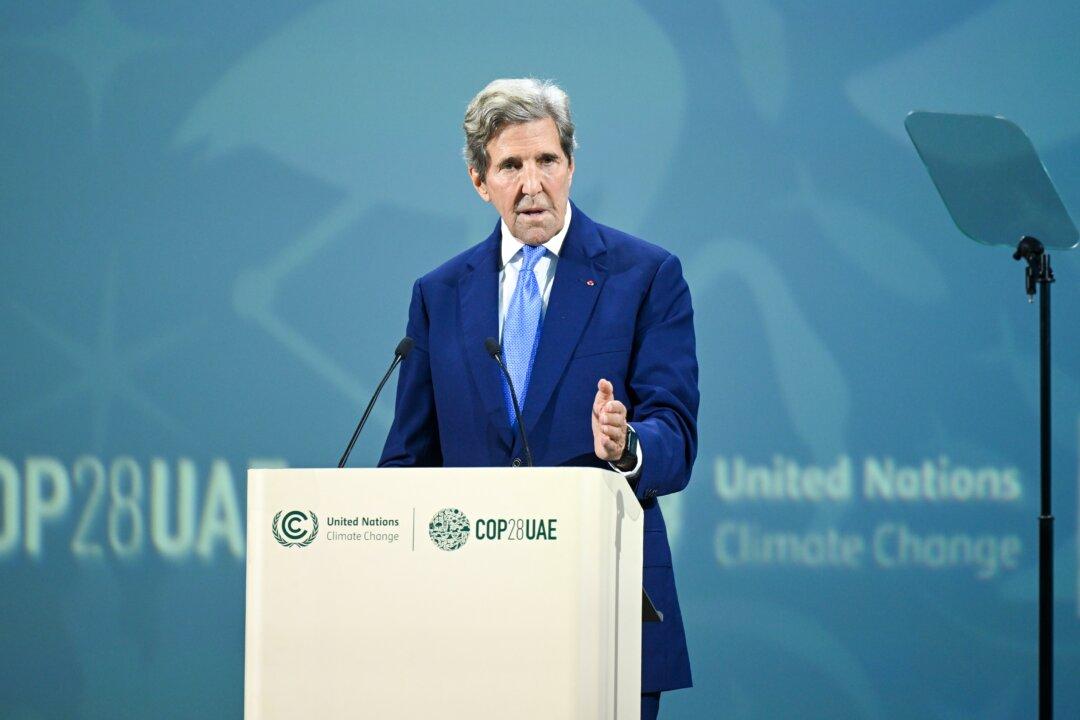The United States has “proudly” committed to not build any new coal-fired power plants and to get rid of existing ones entirely, John Kerry, special presidential envoy on climate matters, said on Dec. 2.
“To meet our goal of 100 percent carbon pollution-free electricity by 2035, we need to phase out unabated coal,” he said in a statement, in which he announced at the annual United Nations COP28 climate change summit in Dubai, United Arab Emirates that the United States had officially joined a coalition of 56 other countries who all plan to ditch coal in the name of climate change.
“We will be working to accelerate unabated coal phase-out across the world, building stronger economies and more resilient communities. The first step is to stop making the problem worse: stop building new unabated coal power plants.”
While no specific date was given for when the Biden administration plans to nix existing U.S. coal plants, other regulatory actions by the administration zero in on 2035 as the year when coal ends.
Anti-Coal Alliance
The anti-coal commitment that Mr. Kerry said Washington had just joined is called the Power Past Coal Alliance, which was started six years ago and had 50 members until Dec. 3, when the United States, Czech Republic, Cyprus, Dominican Republic, Iceland, Kosovo, and Norway joined, bringing the total to 56.The goal, first established in the Paris Agreement in 2015, aims to limit the global temperature rise to 1.5 degrees Celsius by 2100.
In 2022, coal-fired plants generated 36 percent of global electricity, outstripping all other sources. More than half of that output was in China, which is building new coal plants at a fast pace, undeterred by various climate pledges and goals that the country’s leadership has paid lip service to.
Coal Use in China, Elsewhere
China saw coal power projects jump in 2022, even as the country pledged to pare coal consumption by the end of the decade.“50 GW [gigawatts] of coal power capacity started construction in China in 2022, a more than 50 percent increase from 2021. Many of these projects had their permits fast-tracked and moved to construction in a matter of months,” the report reads.
“A total of 106 GW of new coal power projects were permitted, the equivalent of two large coal power plants per week. The amount of capacity permitted more than quadrupled from 23 GW in 2021.”
Coal demand in the United States grew by 15 percent in 2021, per the IEA report.
The vast majority of job losses would be in Asia, with China and India bearing the brunt.
As for the United States, the GEM report estimates that more than 15,000 jobs in the coal sector will be lost per decade in the 2030s and ‘40s, and less than 15,000 jobs will be lost in the 2050s.
For the current decade, the report estimates a U.S. coal job loss of below 15,000.







